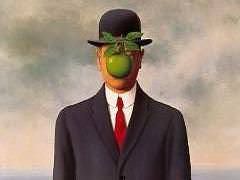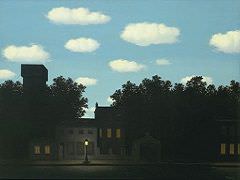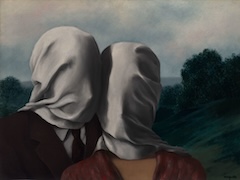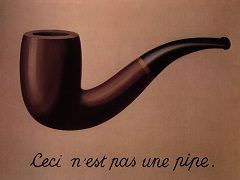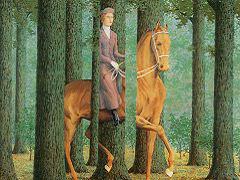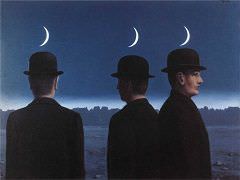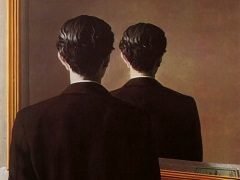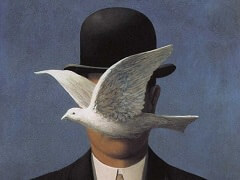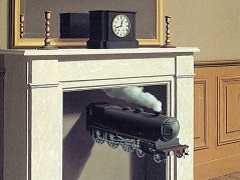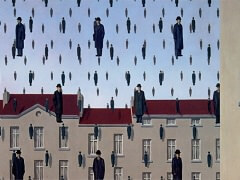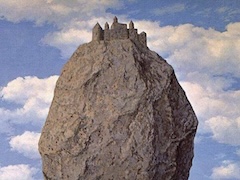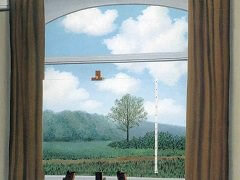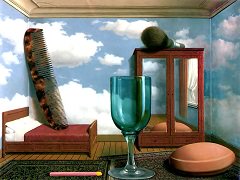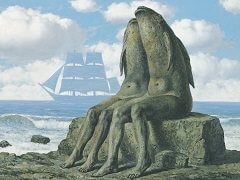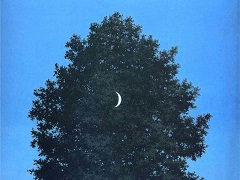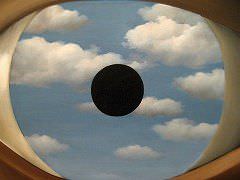The Lost Jockey (Le jockey perdu) 1926 Collage by Rene Magritte
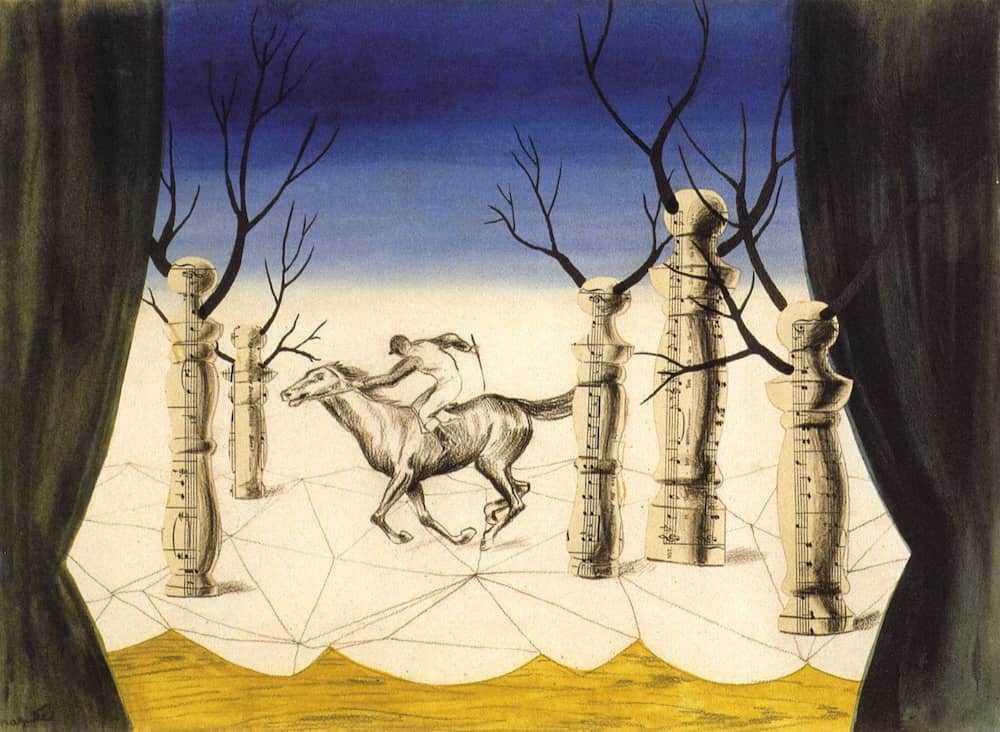
Inspired by the collages of Max Ernst and the paintings of Giogrio De Chirco, Magritte began his new direction in art around 1924. Magritte was an active participant of Dadaism and the Belgiam branch surrealism which united in 1925. The Lost Jockey (Le jockey perdu) was one of a series of collages that contained the bibloquet or balluster that Magritte created in 1925-1926. He considered The Lost jockey to be his first surrealist work although several of his earlier collages would certainly qualify.
Rene designed theatre sets in Brussels in the early 1920s for Theatre du Groupe Libre. The Lost Jockey is one of many theatre settings with a curtain that Magritte produced in his early works. It also uses bilboquets that resemble trees with
musical notation as bark, possibly as a tribute to Mesens, the pianist and composer and his brother Paul, a musician who studied with Mesens.
The jockey is clearly riding on a wooden stage with curtains. The stage is covered with a white cloth with geometric patterns that are umbrella-like. The bibloquet on the right is an impossible object,existing behind and in front of the right curtain.
Magritte revisited some of his paintings many times; most likely to paint a copy as a request for a patron. When he would redo the painting he would usually change the new version slightly from the earlier version.
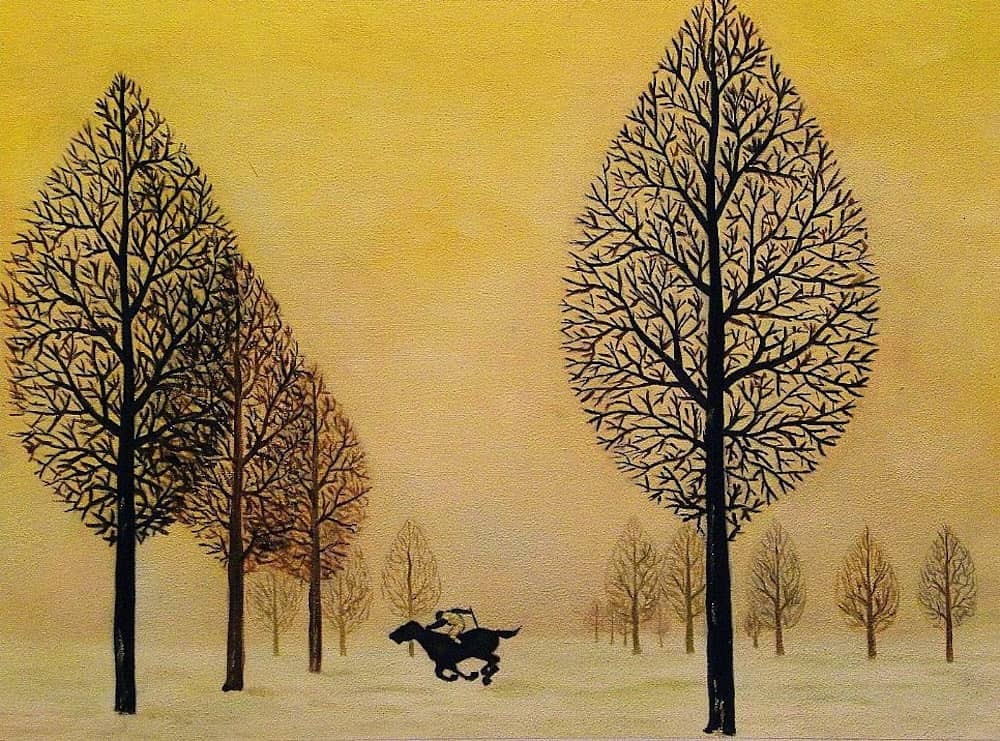
Inspired by the collages of Max Ernst and the paintings of Giogrio De Chirco, Magritte began his new direction in art around 1924. Magritte was an active participant of Dadaism and the Belgiam branch surrealism which united in 1925. The Lost Jockey (Le jockey perdu) was one of a series of collages that contained the bibloquet or balluster that Magritte created in 1925-1926. He considered The Lost jockey to be his first surrealist work although several of his earlier collages would certainly qualify.
Rene designed theatre sets in Brussels in the early 1920s for Theatre du Groupe Libre. The Lost Jockey is one of many theatre settings with a curtain that Magritte produced in his early works. It also uses bilboquets that resemble trees with musical notation as bark, possibly as a tribute to Mesens, the pianist and composer and his brother Paul, a musician who studied with Mesens.
The jockey is clearly riding on a wooden stage with curtains. The stage is covered with a white cloth with geometric patterns that are umbrella-like. The bibloquet on the right is an impossible object,existing behind and in front of the right curtain.
Magritte revisited some of his paintings many times; most likely to paint a copy as a request for a patron. When he would redo the painting he would usually change the new version slightly from the earlier version.

